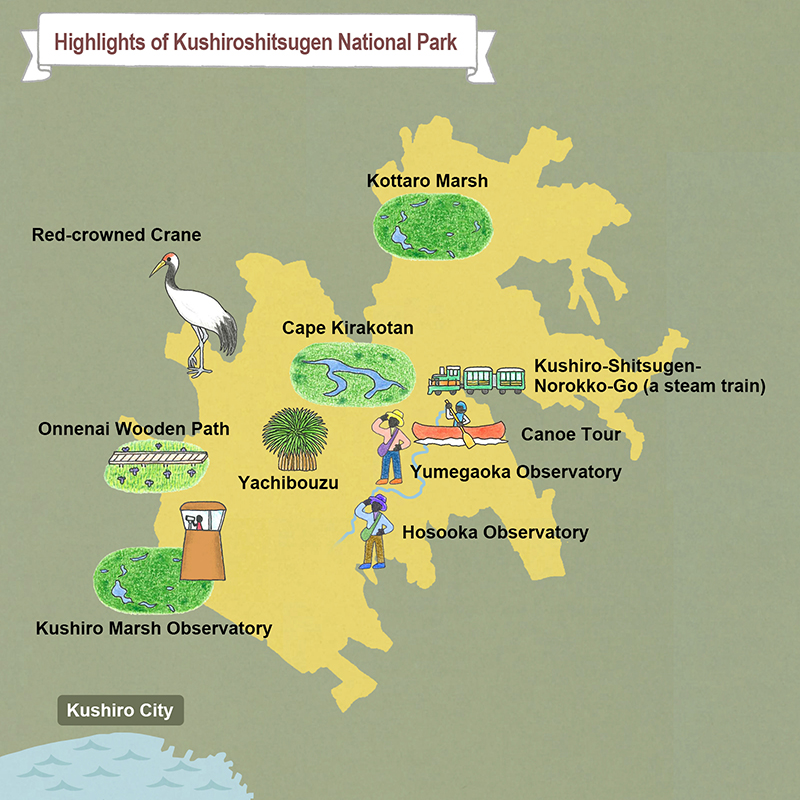- MOE
- National Parks of Japan
- Kushiroshitsugen National Park
- Guide of Highlights
main body
Highlights of Kushiroshitsugen National Park
Kushiro Marsh Observatory
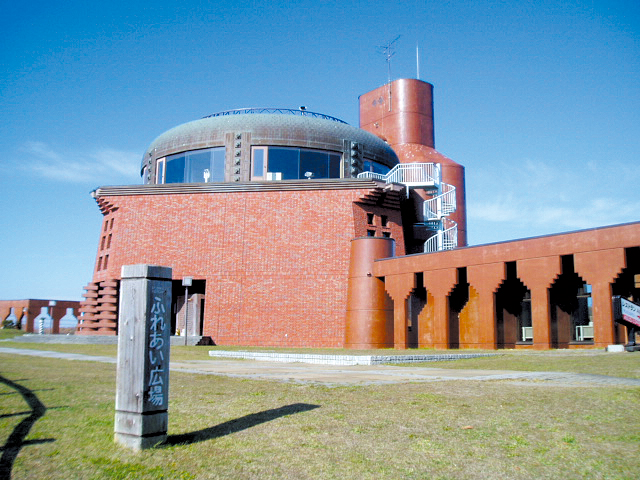
Kushiro Marsh Observatory
The exterior of this observatory and exhibition facility is designed in the shape of Yachibouzu, which are common in the marsh. From the roof it is possible to see not only the marsh but also Kushiro City and as far as the Pacific Ocean. There is also a footpath connecting to a satellite observatory. *Entrance fees are charged for the observatory/exhibition facility.
Onnenai Wooden Path
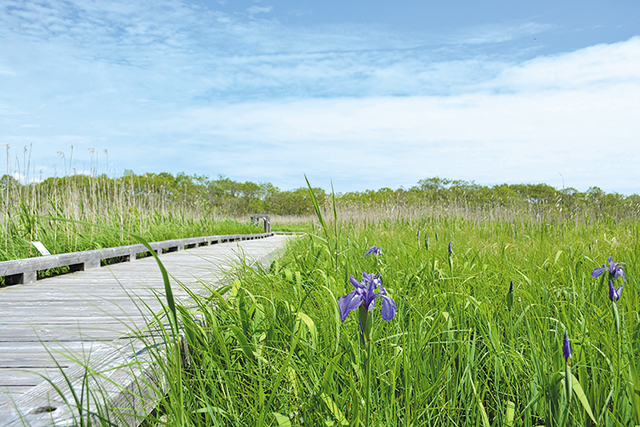
Onnenai Wooden Path
This is the only boardwalk built in the Kushiro Marsh that enables visitors to walk through the marsh. Not only can you enjoy the scenery as you walk, but you can also observe seasonal flowers and changes in marsh plants as well as wild birds up close.
Cape Kirakotan
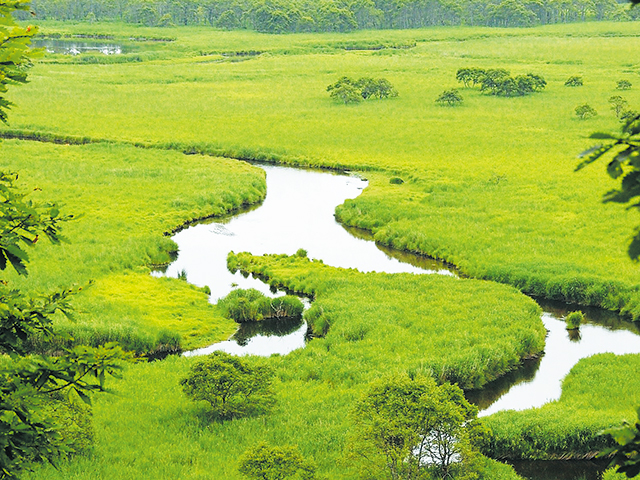
Cape Kirakotan
The name Cape Kirakotan originates from the time when the Kushiro Marsh was ocean and Kirakotan was actually a cape. Located at the innermost point of the Kushiro Marsh, below spreads a lowland landscape patterned with marsh and spring water seeping from the hilly area. The tip of Cape Kirakotan, which is designated as a National Natural Monument, can only be reached on foot and is a 5 km round trip from the car park.*Because the tip of Cape Kirakotan is designated as a National Natural Monument area, permission is required to enter the area. For details, please contact the Tsurui Board of Education (Tel: 0154-64-2050).
Kottaro Marsh Observatory
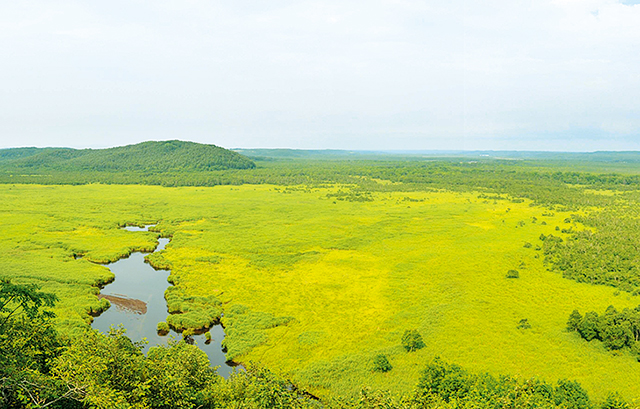
Kottaro Marsh Observatory
Positioned along Hokkaido Prefectural Road 1060, which transects the Kushiro Marsh, the observatory at the top of the stairs provides a panoramic view of the vast marsh sustained by abundant spring water. With binoculars, it is also possible to see red-crowned crane from here.
Hosooka Observatory
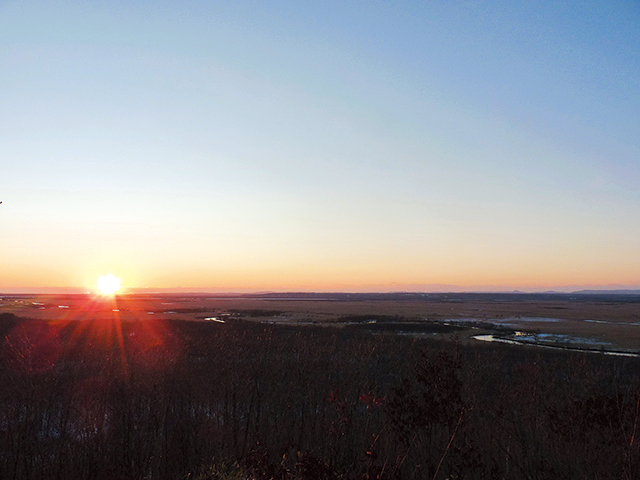
Hosooka Observatory
Located on the eastern side of the Kushiro Marsh, this observatory is also known as Daikanbo ("Expansive View"). True to its name, the observatory provides a panoramic view of the meandering course of the Kushiro River, the Kushiro Marsh, and the Akan Mountains. The spectacular view of the sunset from the observatory is recommended.
Yumegaoka Observatory

Yumegaoka Observatory
Colonies of Yachibouzu and springs can be seen from the Takkobu Trail, which continues for approx. 2.3 km in the hilly area on the northern side of Lake Takkobu. Located at the top of a steep slope, the observatory provides views of the meandering Kushiro River and JR Senmo Main Line.
Sarubo Observatory
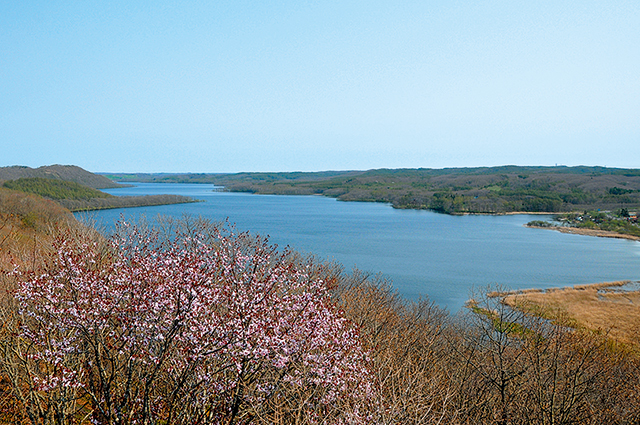
Sarubo Observatory
There are many wooded areas along the walking path, enabling visitors to enjoy a mountain-hiking atmosphere. From the observatory can be seen a group of large and small lakes, including, Lake Toro, providing a view of a marsh and lakes/marshes landscape slightly different from the views from other marsh observatories.
Toro Lakeside Trail
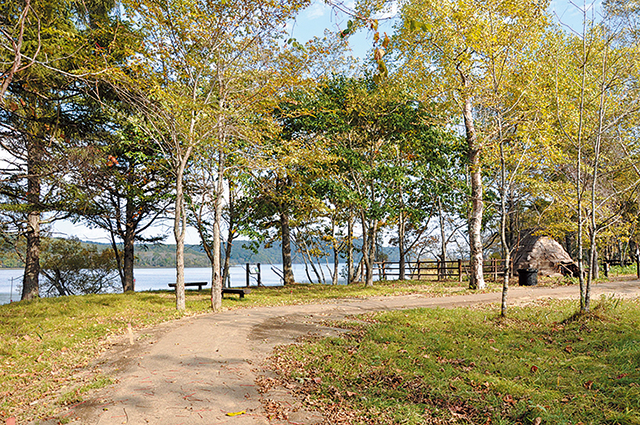
Toro Lakeside Trail
Measuring approx. 600 m, this footpath enables visitors to take a stroll while enjoying the view of Lake Toro. Around the lake are signs explaining the history of Lake Toro and the birds that can be observed here and in the surrounding area. Benches and rest areas are also provided, enabling you to enjoy a leisurely walk around the lakeside.
Wildlife & Plants
Yachibouzu

Yachibouzu
View the strange scenery of clumps of luxurious grass appearing like bald heads on the marsh. This is due to the regrowth of sedges in the same place every year. Referred to fondly by locals as 'Yachibouzu' Yachi in Japanese refers to the marsh lands and bouzu refers to the bald head, so this literally means the bald head of the marsh lands.
Siberian Salamander (Salamandrella keyserlingii)

Siberian Salamander (Salamandrella keyserlingii)
Thought to have crossed to Hokkaido from the continent during the ice age. Considered to be a survivor of the ice age. Seen only in the Kushiro Marsh and on Kunashiri Island.
Red-crowned Crane (Grus japonensis)

Red-crowned Crane (Grus japonensis)
Revered by the Ainu people as the god of the marsh. Designated as a National Special Natural Monument. Found in the Kushiro Marsh throughout the year. Popular among both Japanese and overseas visitors. Let's observe quietly if one approaches.
Activities
Horse Trekking
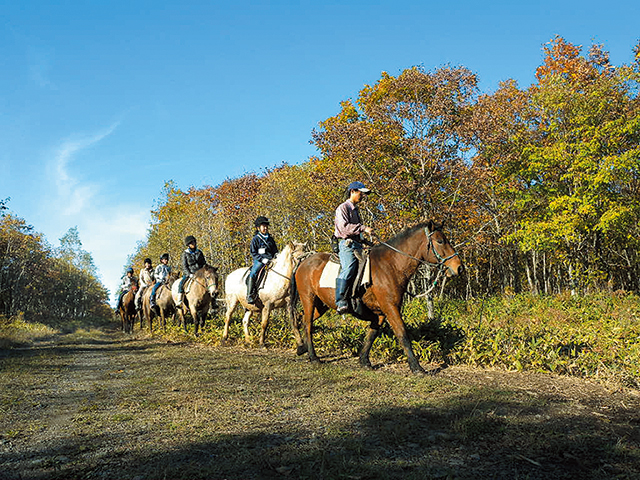
Horse Trekking
Horseback tours on Dosanko, a Japanese horse breed indigenous to Hokkaido, can be experienced. These horses are tall but have gentle natures and have been trained to faithfully follow the horse in front of them, so they can be ridden with peace of mind.
Canoe Tours

Canoe Tours
Since it has no dams, the Kushiro River is a must-do touring course for canoeists nationwide. Especially popular are guided tours of the Hosooka section from Lake Toro, where the current is gentle.
Smelt Fishing
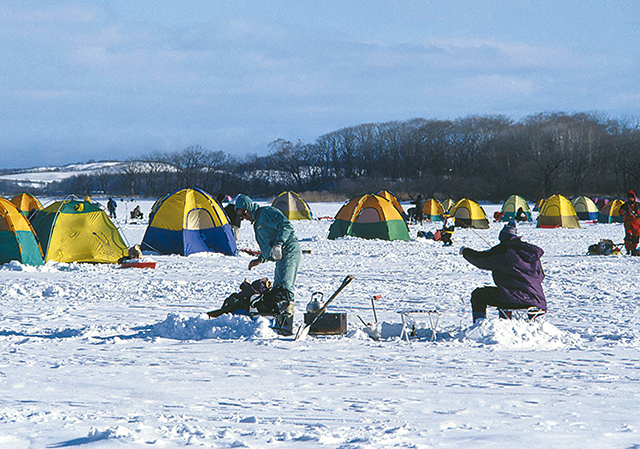
Smelt Fishing
In winter, the lakes in the marsh area are covered in layers of ice tens of centimeters thick. Thus, in the middle of the harsh winter, Lake Toro is lively with throngs of people enjoying smelt-fishing from holes cut in the thick ice.
Kushiro-Shitsugen-Norokko-Go / SL Fuyu-no-Shitsugen-Go

Kushiro-Shitsugen-Norokko-Go / SL Fuyu-no-Shitsugen-Go
Along the JR Senmo Main Line, which follows the Kushiro River through the marsh, there are two train services that run more slowly than normal services, enabling passengers to appreciate the seasonal views: the Kushiro-Shitsugen-Norokko-Go in summer, and the SL Fuyu-no-Shitsugen-Go towed by a steam train in winter. *Operating schedules are subject to change. For details, please contact JR Kushiro Station. [Tel: 0154-24-3176 (5:30 a.m.-10:30 p.m.)]
